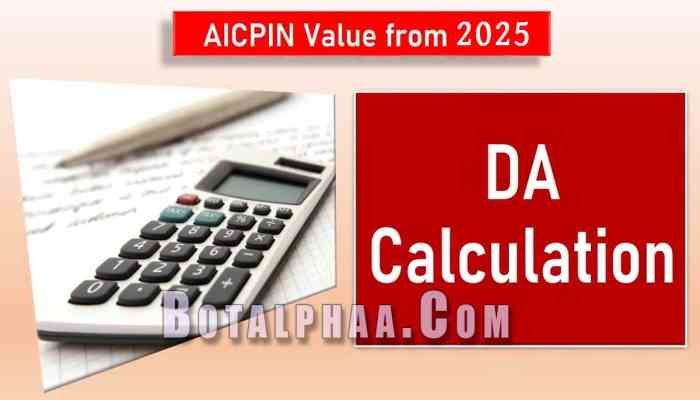Dearness Allowance 2025: Types, Calculation & Hike Guide
Introduction
Imagine being a government school teacher in Delhi, watching the prices of milk, vegetables, and fuel climb steadily. Your salary, fixed years ago, struggles to keep up. This is where Dearness Allowance (DA) steps in. In India, DA is a lifeline for over 10 million government employees and pensioners, designed to shield them from inflation’s bite. As a cost-of-living adjustment, DA ensures salaries and pensions retain their value. In 2025, with a reported 2% hike effective January 1, DA remains a critical topic. This guide explores what Dearness Allowance is, its types, calculation methods, the recent 2025 increase, and its tax implications, offering a clear picture for employees and retirees across India.
What is Dearness Allowance?
Dearness Allowance (DA) is a salary component paid by the Indian government to its employees and pensioners to offset the rising cost of living due to inflation. Calculated as a percentage of basic salary or pension, DA is revised twice a year—typically in January and July—based on the All-India Consumer Price Index (AICPI). For example, a railway worker in Mumbai benefits from DA to afford rising grocery costs. Introduced post-World War II as “Dear Food Allowance,” it has evolved to protect purchasing power. As Wikipedia notes, DA varies by location, reflecting urban, semi-urban, or rural cost differences, ensuring fairness across India’s diverse regions.
“Inflation is when you pay fifteen dollars for the ten-dollar haircut you used to get for five dollars when you had hair.” – Sam Ewing
This quote humorously captures why DA is essential—it helps employees like clerks or nurses maintain their lifestyle despite rising prices. Whether you’re a current employee or a retired pensioner, DA is a cornerstone of financial stability.
Types of Dearness Allowance
Dearness Allowance isn’t one-size-fits-all. It varies based on the employee’s category and location. Here are the main types:
- Central Government DA: Paid to civil servants under the central government, revised biannually based on AICPI. For instance, a tax officer in Chennai receives this DA.
- Industrial Dearness Allowance (IDA): For public sector undertaking (PSU) employees, revised quarterly. A worker at Bharat Petroleum might see more frequent adjustments.
- Variable Dearness Allowance (VDA): A component for certain workers, tied to monthly CPI changes, offering extra protection against inflation spikes.
As ClearTax explains, VDA depends on a fixed base index and fluctuating CPI, ensuring flexibility. These variations ensure DA aligns with economic realities across sectors.
Types of Dearness Allowance
| Type | Recipients | Revision Frequency | Basis |
|---|---|---|---|
| Central Government DA | Civil servants | Biannual (Jan, Jul) | AICPI (12-month average) |
| Industrial DA (IDA) | PSU employees | Quarterly | CPI |
| Variable DA (VDA) | Specific worker categories | Monthly (via CPI) | CPI and fixed base index |
How is Dearness Allowance Calculated?
Calculating Dearness Allowance involves the All-India Consumer Price Index (AICPI), which tracks prices of everyday goods. Under the 7th Pay Commission, effective since 2016, DA for central government employees uses the formula:
DA % = [(Average AICPI for past 12 months – Base AICPI) / Base AICPI] × 100
The base AICPI, set at 261.42 (average for 2015), reflects the 2016 baseline. For example, if the 12-month AICPI average is 300, the DA is:
[ \text{DA} % = \left( \frac{300 – 261.42}{261.42} \right) \times 100 \approx 14.77% ]
This percentage applies to the basic salary. For a Rs. 50,000 basic salary, DA would be Rs. 7,385. As BankBazaar notes, the formula ensures DA reflects inflation trends accurately.

Dearness Allowance Hike in January 2025
On March 28, 2025, the Union Cabinet, chaired by PM Narendra Modi, approved a 2% Dearness Allowance hike, raising it from 53% to 55%, effective January 1, 2025, according to The Times of India. This benefits over 11.5 million employees and pensioners, costing an estimated Rs. 6,614 crore annually. For an employee with a Rs. 40,000 basic salary, DA increased from Rs. 21,200 to Rs. 22,000, adding Rs. 800 monthly. Arrears for January to March were paid with April’s salary. While some hoped for a 3-4% hike, the 2% increase aligns with modest inflation trends.
“The best way to predict the future is to create it.” – Peter Drucker
This hike, though modest, reflects the government’s effort to support its workforce, as seen in the story of Anita, a postal worker in Kolkata, who used the extra Rs. 800 to cover her daughter’s school fees.
Dearness Allowance for Pensioners
Pensioners receive Dearness Relief (DR), equivalent to DA, to maintain their purchasing power. The January 2025 hike raised DR to 55%. For a pensioner with a Rs. 20,000 basic pension, DR increased from Rs. 10,600 to Rs. 11,000, adding Rs. 400 monthly. As ClearTax highlights, this ensures retirees like Ramesh, a former railway clerk, can afford rising medical costs. DR applies to both individual and family pensions, but not to re-employed pensioners abroad.
Tax Implications of Dearness Allowance
Dearness Allowance is fully taxable, included in gross salary for income tax calculations. Employees must declare DA when filing returns, as per the Income Tax Act, 1961. For those with rent-free accommodation, DA may count toward retirement benefit salary under specific conditions, per ClearTax. For example, a clerk earning Rs. 50,000 basic salary with 55% DA (Rs. 27,500) sees their taxable income rise, potentially pushing them into a higher tax bracket. Understanding this helps employees plan finances better.
Also Check:
Fintech Talent India
Official Website
Frequently Asked Questions
What is the difference between DA and DR?
DA supports current government employees, while DR aids pensioners. Both counteract inflation’s impact.
How often is Dearness Allowance revised?
DA is revised biannually (January and July) based on AICPI data.
Does DA vary by location?
Yes, DA adjusts for urban, semi-urban, or rural cost-of-living differences.
Is DA taxable for all employees?
DA is fully taxable, though tax implications vary based on salary structure.
Can private sector employees get DA?
Some private firms offer similar allowances, but DA is primarily for government workers.
Conclusion
Dearness Allowance is more than a salary component—it’s a shield against inflation for India’s government employees and pensioners. The 2025 hike to 55% underscores the government’s commitment to financial stability for millions. By understanding DA’s types, calculations, and tax implications, employees like Anita or retirees like Ramesh can better navigate their finances. Share your thoughts on DA in the comments, or explore our related articles for more insights on government salaries and financial planning.
“Money is only a tool. It will take you wherever you wish, but it will not replace you as the driver.” – Ayn Rand







